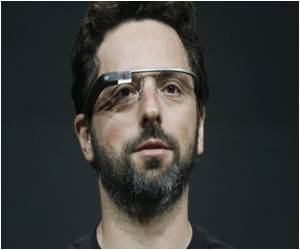Study in mice reveals an oxytocin-fueled brain circuit that regulates social and facial recognition.

‘Social recognition is regulated by a lattice of oxytocin-sensitive neurons in the part of the brain called the hippocampus.’





The experiments, described in Nature Communications, show that social recognition is regulated by a lattice of oxytocin-sensitive neurons in a part of the hippocampus, a seahorse shaped structure in the brain responsible for memory formation. The results add to a scarce but growing body of research casting the hippocampus in a new light. Commonly described as the brain’s librarian--charged with forming short-term memories, consolidating them into long-term ones and labeling and storing them for later retrieval--the hippocampus’ role in spatial navigation has been well established. However, its involvement in social behavior in general and social recognition in particular has thus far remained poorly understood.
The latest findings indicate the hippocampus does play a role as a differentiator of social memories when enabled by the neurochemical oxytocin, known for its role in bonding, empathy and sexual pleasure. Specifically, the team’s experiments reveal that computation of social stimuli takes place in the dentate gyrus-CA3 (DG-CA3) circuit, a subunit of the hippocampus thought to play the role of a master cataloguer, responsible for filing similar memories in distinct "folders" ensuring that the correct file is retrieved when needed.
The findings indicate that oxytocin is a critical catalyst that switches the circuit’s functional mode. In the absence of oxytocin, the circuit regulates object recognition.
"Our results indicate that oxytocin usurps this preexisting neural circuit within the hippocampus that normally regulates the differentiation of similar memories," said study first author Tara Raam, a graduate student in neuroscience at Harvard University. "In the presence of oxytocin, the circuit assumes an additional role as a regulator of social cognition."
Advertisement
"Nature is thrifty, it’s parsimonious," said senior investigator Amar Sahay, a Harvard Medical School associate professor at the Center for Regenerative Medicine and the Department of Psychiatry at Massachusetts General Hospital. "It doesn’t like to invent different components for different processes. It repurposes existing ones."
Advertisement
Basic neural computations that separate similar but different stimuli from one another are critical in even the most prosaic of daily activities. Earlier work published by Sahay’s team indicates such neural sifting underlies the ability to distinguish between benign and threatening stimuli in our surroundings. When such neural arithmetic goes awry--as it does in people with PTSD, for example--it can result in the perception of threat where there is none. For example, Sahay says, a soldier who has returned home from combat is driving down the road to a coffee shop. He sees something on the road that resembles an improvised explosive device.
"The sight triggers an earlier memory," Sahay said. "A healthy soldier would dismiss the object, but someone with PTSD would retrieve the full initial memory because of impaired discrimination between similar stimuli. That person will perceive the benign object as a threat. It’s an overgeneralization of fear."
The tip-off
In the current study, scientists homed in on an area of the hippocampus known as the dentate gyrus, which receives input from the external environment and relays it to a cluster of neurons known as CA3, essentially a conduit for information processed in the dentate gyrus.
Previous work by Sahay and others has suggested the DG-CA3 neural scaffold plays a role in distinguishing similar memories from each other, particularly those related to space and place: Think approaching a familiar part of town and seeing a sign or a structure that in an instant tells you’re in known territory.
The hippocampus and its DG-CA3 scaffold--epicenters of memory formation and differentiation--sport an intricate neuronal circuitry. Neurons in these areas are studded with an abundance of receptors for oxytocin, an observation that thus far had remained somewhat baffling to scientists.
Sahay and team wondered: Why are the brain’s chief cataloguers endowed with so many receptors for an affective neurochemical? As far as Sahay’s team was concerned it was a telltale sign that oxytocin performed a critical function, one worth exploring further.
In a series of experiments, Sahay’s team showed that, indeed, the presence of oxytocin sparks signaling across the circuit to guide social interaction.
In one set of experiments, the researchers used viruses to delete oxytocin receptors in the DG-CA3 circuit of the brains of mice. Despite losing their oxytocin receptors, the animals retained their ability to differentiate between old and new objects, such as cups and bowls. They could also distinguish between inanimate and animate objects--they opted, appropriately, to spend time with another mouse instead of an empty bowl. The story changed when these oxytocin-insensitive mice were put in social situations. Presented with known and unknown mice, normal mice spent more time with the unknown animals. However, animals that lacked oxytocin receptors could no longer tell their old acquaintances from the newcomers, spending as much time with the old buddies as they did with the strangers. As far as mouse social etiquette goes, animals lacking oxytocin receptors were socially inept, Sahay said.
The finding, Sahay says, shows that although the DG-CA3 circuit regulates object recognition, when it is awash with oxytocin, it also regulates social recognition.
A neural relay
While the hippocampus indexes new memories, social behavior is guided by other brain regions. So, the researchers’ next question became: Once social computations are made in the DG-CA3 circuit, how are they relayed out of the hippocampus to guide behavior?
To answer this question, researchers used a technique known as optogenetics, which involves the genetic modification of neurons to make them sensitive to light.
To map the precise route specific to social signal transmission, the researchers illuminated all neural routes emanating from DG-CA3 to other parts of the brain. To pinpoint the route responsible for the conduction of social memories, the scientists switched on and off the various neural pathways and observed the effect on animal behavior.
Results revealed a neural highway that begins in the DG-CA3 circuit. From there the social signals get transmitted to the posterior part of the hippocampus, which in turn submits the data outside of the hippocampus to an area in the forebrain called the nucleus accumbens, known to govern a range of social behaviors and to play a role in reward seeking, aversion, addiction and pleasure.
Taken together the findings reveal that oxytocin receptors act as critical catalysts that ignite neural computation of social stimuli in a specific circuit within the hippocampus, which relays the signals to other brain regions for further analysis and subsequent decision making.
Source-Eurekalert














